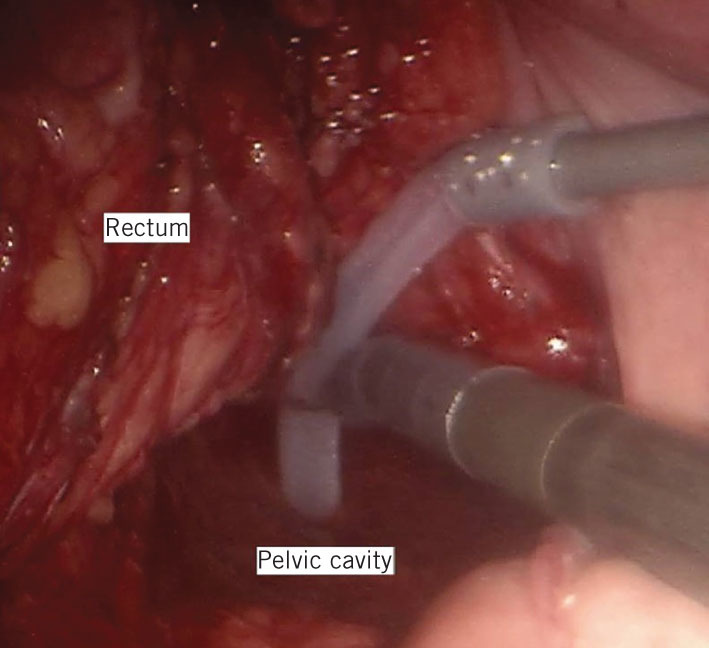Minimal access surgery has become the preferred approach for rectal cancer surgery. Laparoscopic and, more recently, robotic anterior resection has gained popularity due to proven short- and long-term benefits. However, technical compromise and limitations have been reported in a number of studies, owing to the rigidity of instruments when operating deep in the confined space of the pelvis.1 The rigid laparoscopic suction device is one such instrument. The lack of flexibility can make it difficult or impossible to achieve precise and effective suction during complex procedures.
We found a simple solution to this problem by attaching 6 cm of Robinson drain tubing (22 Fr) to the tip of a laparoscopic suction device (Fig 1). The tubing can be manipulated into otherwise inaccessible areas using robotic or laparoscopic instruments. The flexible tip avoids instrument clashing and offers easy manoeuvrability within the rigid pelvis. This is a simple, inexpensive and effective adaptation for aspiration of fluid and smoke in cases where access is restricted.
Figure 1.

Suction set-up demonstrated during robotic low anterior resection
Reference
- 1.Chand M, Bhoday J, Brown G et al. Laparoscopic surgery for rectal cancer. J R Soc Med 2012; (10): 429–435. [DOI] [PMC free article] [PubMed] [Google Scholar]


